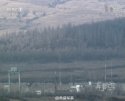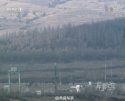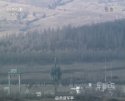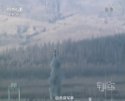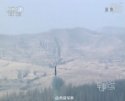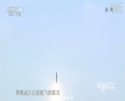You are using an out of date browser. It may not display this or other websites correctly.
You should upgrade or use an alternative browser.
You should upgrade or use an alternative browser.
China Ballistic Missiles and Nuclear Arms Thread
- Thread starter peace_lover
- Start date
- Status
- Not open for further replies.
People, are there any estimates for current DF-31A numbers? Last pentagon report was rather vague claming 50 - 60 ICBM (DF-5A, DF-31/31A, DF-4). If we drop DF-4 and count only the others:
DF-5A - 10 (to be or already upgraded to DF-5B)
DF-5B -10
DF-31 - less than 15
DF-31A - ???
What is the point of this ? Wouldn't they be better off just build a whole bunch of new DF-41's ?
Confirmed: China is Upgrading ICBMs With Multiple Warheads
Beijing has been retrofitting single-warhead ICBMs with multiple, independently targetable re-entry vehicles.
For the past several months, China has been upgrading single-warhead intercontinental ballistic missiles with multiple, independently targetable re-entry vehicles (MIRVs), according to U.S. intelligence agencies, The Washington Times reports.
“China is re-engineering its long-range ballistic missiles to carry multiple nuclear warheads,” the head of U.S. Strategic Command Admiral Cecil D. Haney said in a January 22 speech.
On February 9, the Director of National Intelligence James R. Clapper noted that China “continues to modernize its nuclear forces by adding more survivable road-mobile systems and enhancing its silo-based systems.”
U.S. defense officials revealed that the People’s Liberation Army Rocket Force (PLARF) has upgraded its older liquid-fuelled, silo-based Dongfeng 5A ICBM with MIRVs containing three (some sources say eight) warheads.
An advanced variant of the Dongfeng 5, the DF-5B, was displayed during Beijing’s grand military parade to commemorate the 70th anniversary of the surrender of Japan and the end of the Second World War, held in September 2015 (See: “Here’s What You Need to Know About China’s Grand Military Parade”). The liquid-fueled DF-5B purportedly has a range of 12,000-15,000 kilometers (6,835-7,456 miles).
Overall, the PLARF is estimated to possess 20 Dongfeng DF-5B ICBMs, although some analysts believe that the number of missiles has increased beyond 20.
“When you add the possibility of MIRVed DF-5s exceeding 20, to the imminent deployment of the road-mobile and rail-mobile MIRVed DF-41, and the potential for a MIRVed version of the DF-31 called the DF-31B, it becomes possible to consider that China may reach 500 or more ICBM warheads in the next few years,” Rick Fisher, a China military analyst, told The Washington Times.
“This, combined with China aggressive development of missile defenses, space warfare capabilities and possible non-nuclear prompt global strike missiles, will quickly undermine confidence by U.S. allies in the extended U.S. nuclear deterrent,” he added.
“High-confidence assessments of the numbers of Chinese nuclear-capable ballistic missiles and nuclear warheads are not possible due to China’s lack of transparency about its nuclear program,” the latest U.S.-China Economic and Security Review Commission report notes.
However, “despite the uncertainty surrounding China’s stockpiles of nuclear missiles and nuclear warheads, it is clear China’s nuclear forces over the next three to five years will expand considerably and become more lethal and survivable (…).”
The DF-5 missile series will eventually be phased out and replaced by the solid-fueled DF-41 (CSS-X-20) ICBM, last tested in August 2015 (See: “China Tests New Missile Capable of Hitting Entire United States”). Once operational, it will be the PLARF’s most advanced ICBM to date.
The re-engineering of China’s ICBM force has been known for some time, although no unclassified assessment has so far been been able to confirm details of China’s ICBMs modernization effort.
Hyperwarp
Captain
What is the point of this ? Wouldn't they be better off just build a whole bunch of new DF-41's ?.
....
Eh?
The issue is to upgrade the DF-5 with MIRV.Eh?Question was regarding DF-31A inventory.
SinoSoldier
Colonel
Let me get this straight: there is no new production of DF-5Bs, but rather conversions from existing DF-5s?
antiterror13
Brigadier
Let me get this straight: there is no new production of DF-5Bs, but rather conversions from existing DF-5s?
We simply don't know, I don't think China would have any difficulties to produce new DF-5X ... 12 DF-5X a year is very much achievable, no problem .. its just a matter of a need
Hyperwarp
Captain
Let me get this straight: there is no new production of DF-5Bs, but rather conversions from existing DF-5s?
Most likely the case. They probably stopped producing DF-5 series more than a decade ago. But the the warhead section can be modified. After all why throw away a missile with 12,000-15,000 km range? 20 single warhead missiles can be converted to 20 missile carrying 3-8 MIRV.
But, what I want to know is, how many DF-31A launchers do the rocket forces have by the end of 2015.

The issue is to upgrade the DF-5 with MIRV.
I read that the DF-5 warheads were getting too old, so they had to be replaced anyway.
Anyone else get this?
SinoSoldier
Colonel
Hyperwarp
Captain
Test launch of a DF-31(A). Note the reentry vehicle; it if this is the DF-31A variant, then it is unlikely to be MIRV-capable (the DF-31B is believed to have MIRVs instead).
***
Very rare footage. Does anyone have the video? Plus, the fact this footage has been officially outed means something new has entered service or about to enter service and I don't think it it just the DF-31B.
- Status
- Not open for further replies.






